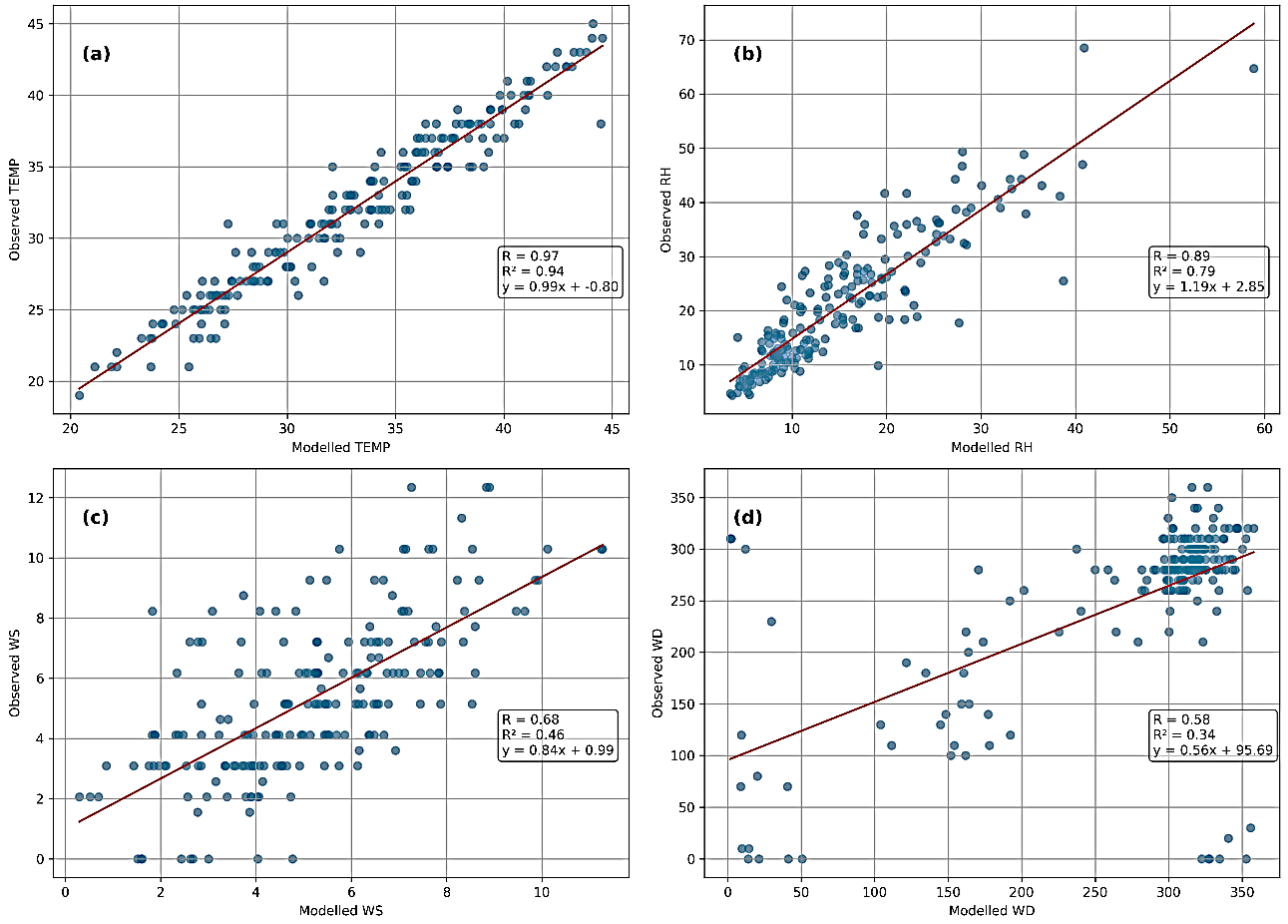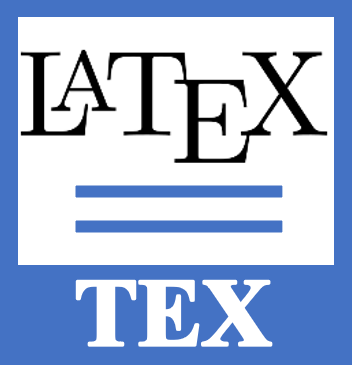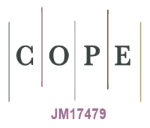Diagnosis of a Severe Dust Storm Event over Iraq
DOI:
https://doi.org/10.23851/mjs.v36i2.1686Keywords:
Dust storms, CAMS, Dust RGB Imagery, Cold Front, EnvironmentAbstract
Background: Iraq experienced a severe dust event that occurred in mid-May 2022, disrupting daily life with adverse health impacts. Objective: This study aims to investigate the triggering weather systems, and examine the variations in meteorological factors during the event with a specific focus on Basrah station in southern Iraq. Methods: Ground-based meteorological observations and satellite imagery. In addition to the atmospheric composition forecast data from the copernicus atmosphere monitoring service (CAMS), including meteorological and optical properties for different levels. Applying statistical evaluations for CAMS data against observed data, including correlation coefficients, coefficient of determination, and error metrics (MBE and MAE). Results: The dust event was driven by a deep upper air cut-off low over the eastern Mediterranean region, coinciding with a southern intrusion of the polar jet stream. This situation led to baroclinic instability and the developing frontal cyclonic system over southern Turkey, Syria, Jordan, western Iraq to northern Saudi Arabia. Satellite images showed dense dust clouds swept and transported towards the east and southeast due to the front passage, which is simulated well in the CAMS model with a value exceeding 2.5 of optical depth. In Basrah station, the dust event led to a notable reduction in visibility, lower temperature by 4° C, and surface solar radiation of 15%. Wind speed, extinction coefficient, and humidity levels increase by about 2.2, 2, and 1.4 times respectively. 12% reduction in boundary layer height during daytime hours of a dust event, and an 8% increment during nighttime. The statistical assessment shows a strong correlation for temperature and humidity, moderate for wind speed, and weak for wind direction. The model overestimates temperature and wind direction, while underestimating humidity and wind speed. Errors are low for most variables but notably higher for wind direction. Conclusions: The May 2022 dust event was driven by a deep frontal cyclone, reaching central and southern Iraq, in which Basrah station witnessed reduced visibility, lower temperature and solar radiation, and increased wind speed, humidity, and extinction coefficient. Boundary layer height decreased during the day and rose at night, highlighting the atmospheric instability during the event.
Downloads
References
P. Knippertz and J.-B. W. Stuut, Mineral dust: A key player in the Earth system. Springer Netherlands, 2014, isbn: 9789401789783.
CrossRef | Google Scholar
C. Opp, M. Groll, H. Abbasi, and M. A. Foroushani, "Causes and effects of sand and dust storms: What has past research taught us? A survey," Journal of Risk and Financial Management, vol. 14, no. 7, p. 326, 2021.
CrossRef | Google Scholar
M. C. Thomson, I. Jeanne, and M. Djingarey, "Dust and epidemic meningitis in the Sahel: A public health and operational research perspective," IOP Conference Series: Earth and Environmental Science, vol. 7, p. 012017, Mar. 2009.
CrossRef | Google Scholar
R. Al Nadhairi, M. Al Kalbani, S. Al Khazami, M. Al Hashmi, S. Al Zadai, Y. Al-Rumhi, and K. M. Al-Kindi, "Air quality and health risk assessment during Middle Eastern dust storms: A study of particulate matter," Air Quality, Atmosphere & Health, vol. 18, no. 2, pp. 587-603, 2024.
CrossRef | Google Scholar
T. Li, A. J. Cohen, M. Krzyzanowski, C. Zhang, S. Gumy, P. Mudu, P. Pant, Q. Liu, H. Kan, S. Tong, S. Chen, U. Kang, S. Basart, N. E. Touré, A. Al-Hemoud, Y. Rudich, A. Tobias, X. Querol, K. Khomsi, F. Samara, M. Hashizume, M. Stafoggia, M. Malkawi, S. Wang, M. Zhou, X. Shi, G. Jiang, and H. Shen, "Sand and dust storms: A growing global health threat calls for international health studies to support policy action," The Lancet Planetary Health, vol. 9, no. 1, pp. E34-E40, 2025.
CrossRef | Google Scholar | PubMed
A. S. Goudie and N. J. Middleton, Desert dust in the global system. Springer Berlin Heidelberg, 2006, isbn: 9783540323549.
CrossRef | Google Scholar
M. Kanakidou, S. Myriokefalitakis, and K. Tsigaridis, "Aerosols in atmospheric chemistry and biogeochemical cycles of nutrients," Environmental Research Letters, vol. 13, no. 6, p. 063004, 2018.
CrossRef | Google Scholar
D. Rosenfeld, Y. Rudich, and R. Lahav, "Desert dust suppressing precipitation: A possible desertification feedback loop," Proceedings of the National Academy of Sciences, vol. 98, no. 11, pp. 5975-5980, 2001.
CrossRef | Google Scholar | PubMed
D. Francis, J.-P. Chaboureau, N. Nelli, J. Cuesta, N. Alshamsi, M. Temimi, O. Pauluis, and L. Xue, "Summertime dust storms over the Arabian Peninsula and impacts on radiation, circulation, cloud development and rain," Atmospheric Research, vol. 250, p. 105364, Mar. 2021.
CrossRef | Google Scholar
B. Pan, Y. Wang, Y. Lin, J.-S. Hsieh, M. Lavallee, L. Zhao, and R. Zhang, "Radiative and microphysical impacts of the Saharan dust on two concurrent tropical cyclones: Danielle and Earl (2010)," Journal of Geophysical Research: Atmospheres, vol. 129, no. 2, 2024.
CrossRef | Google Scholar
A. R. Baker, O. Laskina, and V. H. Grassian, "Processing and ageing in the atmosphere," in Mineral Dust. Springer Netherlands, 2014, pp. 75-92, isbn: 9789401789783.
CrossRef | Google Scholar
C. R. Usher, A. E. Michel, and V. H. Grassian, "Reactions on mineral dust," Chemical Reviews, vol. 103, no. 12, pp. 4883-4940, 2003.
CrossRef | Google Scholar | PubMed
J. F. Kok, A. A. Adebiyi, S. Albani, Y. Balkanski, R. Checa-Garcia, M. Chin, P. R. Colarco, D. S. Hamilton, Y. Huang, A. Ito, M. Klose, L. Li, N. M. Mahowald, R. L. Miller, V. Obiso, C. Pérez García-Pando, A. Rocha-Lima, and J. S. Wan, "Contribution of the world's main dust source regions to the global cycle of desert dust," Atmospheric Chemistry and Physics, vol. 21, no. 10, pp. 8169-8193, 2021.
CrossRef | Google Scholar
S. K. Al-Dabbagh, "The use of aerosol optical properties in identification of dust sources in Iraq," Journal of Physics: Conference Series, vol. 1660, no. 1, p. 012049, 2020.
CrossRef | Google Scholar
P. Ginoux, J. M. Prospero, T. E. Gill, N. C. Hsu, and M. Zhao, "Global‐scale attribution of anthropogenic and natural dust sources and their emission rates based on MODIS Deep Blue aerosol products," Reviews of Geophysics, vol. 50, no. 3, 2012.
CrossRef | Google Scholar
G. Zittis, M. Almazroui, P. Alpert, P. Ciais, W. Cramer, Y. Dahdal, M. Fnais, D. Francis, P. Hadjinicolaou, F. Howari, A. Jrrar, D. G. Kaskaoutis, M. Kulmala, G. Lazoglou, N. Mihalopoulos, X. Lin, Y. Rudich, J. Sciare, G. Stenchikov, E. Xoplaki, and J. Lelieveld, "Climate change and weather extremes in the Eastern Mediterranean and Middle East," Reviews of Geophysics, vol. 60, no. 3, 2022.
CrossRef | Google Scholar
X. Wang and C. Zhang, "Sensitivity of soil dust emissions to driving factor variability in earth's main drylands," Geoderma, vol. 445, p. 116876, May 2024.
CrossRef | Google Scholar
A. Rocha-Lima, P. R. Colarco, A. S. Darmenov, E. P. Nowottnick, A. M. da Silva, and L. D. Oman, "Investigation of observed dust trends over the Middle East region in NASA Goddard Earth Observing System (GEOS) model simulations," Atmospheric Chemistry and Physics, vol. 24, no. 4, pp. 2443-2464, 2024.
CrossRef | Google Scholar
M. Hamidi, M. R. Kavianpour, and Y. Shao, "Synoptic analysis of dust storms in the Middle East," Asia-Pacific Journal of Atmospheric Sciences, vol. 49, no. 3, pp. 279-286, 2013.
CrossRef | Google Scholar
Y. Shao, Physics and modelling of wind erosion. Springer Netherlands, 2008, isbn: 9781402088957.
CrossRef | Google Scholar
D. Francis, R. Fonseca, N. Nelli, D. Bozkurt, J. Cuesta, and E. Bosc, "On the Middle East's severe dust storms in spring 2022: Triggers and impacts," Atmospheric Environment, vol. 296, p. 119539, Mar. 2023.
CrossRef | Google Scholar
N. H. Hamzeh, S. Karami, D. G. Kaskaoutis, I. Tegen, M. Moradi, and C. Opp, "Atmospheric dynamics and numerical simulations of six frontal dust storms in the Middle East region," Atmosphere, vol. 12, no. 1, p. 125, 2021.
CrossRef | Google Scholar
S. Karami, D. G. Kaskaoutis, S. S. Kashani, M. Rahnama, and A. Rashki, "Evaluation of nine operational models in forecasting different types of synoptic dust events in the Middle East," Geosciences, vol. 11, no. 11, p. 458, 2021.
CrossRef | Google Scholar
A. R. S. Abadi, N. H. Hamzeh, M. Chel Gee Ooi, S. S.-K. Kong, and C. Opp, "Investigation of two severe shamal dust storms and the highest dust frequencies in the South and Southwest of Iran," Atmosphere, vol. 13, no. 12, p. 1990, 2022.
CrossRef | Google Scholar
S. Tabarestani, G. Kamali, M. Vazifedoust, and S. Sehat Kashani, "Spectral and synoptic analysis of Haboob in Tehran, Iran," Meteorology and Atmospheric Physics, vol. 133, no. 4, pp. 1029-1040, 2021.
CrossRef | Google Scholar
S. Karami, D. G. Kaskaoutis, Z. Ghassabi, and S. Khansalari, "Investigation and model simulation of dry and moist (haboob) convective dust storms in Yazd Province, central Iranian plateau," Arabian Journal of Geosciences, vol. 16, no. 4, 2023.
CrossRef | Google Scholar
R. Papi, S. Attarchi, A. Darvishi Boloorani, and N. Neysani Samany, "Characterization of hydrologic sand and dust storm sources in the Middle East," Sustainability, vol. 14, no. 22, p. 15352, 2022.
CrossRef | Google Scholar
M. F. Al-Zuhairi and J. H. Kadhum, "Spatiotemporal distribution of the Aura-OMI aerosol index and dust storm case studies over Iraq," Arabian Journal of Geosciences, vol. 14, no. 10, p. 909, 2021.
CrossRef | Google Scholar
C. Fountoukis, H. Harshvardhan, I. Gladich, L. Ackermann, and M. A. Ayoub, "Anatomy of a severe dust storm in the Middle East: Impacts on aerosol optical properties and radiation budget," Aerosol and Air Quality Research, vol. 20, no. 1, pp. 155-165, 2020.
CrossRef | Google Scholar
S. Basart, C. Pérez, S. Nickovic, E. Cuevas, and J. M. Baldasano, "Development and evaluation of the BSC-DREAM8b dust regional model over Northern Africa, the Mediterranean and the Middle East," Tellus B: Chemical and Physical Meteorology, vol. 64, no. 1, p. 18539, 2012.
CrossRef | Google Scholar
S. K. Mohammed, N. M. A. Fatla, and S. A. A. Wahab, "Numerical simulation of dust event during (1-6) June 2012 using BSC-DREAM8b dust regional model over West Asia, a case study," IOSR Journal of Environmental Science, Toxicology and Food Technology, vol. 9, pp. 63-78, Dec. 2015.
CrossRef | Google Scholar | Link
H. Cao, F. Amiraslani, J. Liu, and N. Zhou, "Identification of dust storm source areas in West Asia using multiple environmental datasets," Science of The Total Environment, vol. 502, pp. 224-235, Jan. 2015.
CrossRef | Google Scholar | PubMed
A. S. Alzaid, I. Anil, and O. Aga, "Simulation and assessment of episodic dust storms in Eastern Saudi Arabia using HYSPLIT trajectory model and satellite observations," Atmosphere, vol. 15, no. 12, p. 1515, 2024.
CrossRef | Google Scholar
J. E. Oliver, Encyclopedia of world climatology. Springer Netherlands, 2005, p. 854, isbn: 9781402032660.
CrossRef | Google Scholar
S. Rémy, Z. Kipling, V. Huijnen, J. Flemming, P. Nabat, M. Michou, M. Ades, R. Engelen, and V.-H. Peuch, "Description and evaluation of the tropospheric aerosol scheme in the Integrated Forecasting System (IFS-AER, cycle 47R1) of ECMWF," Geoscientific Model Development, vol. 15, no. 12, pp. 4881-4912, 2022.
CrossRef | Google Scholar
U. Schulzweida, "CDO User Guide," en, version 2.3.0, Oct. 2023.
CrossRef | Google Scholar
Iowa Environmental Mesonet, IEM :: Download Daily Summary Data.
Link
Aerodrome reports and forecasts: A users' handbook to the codes. World Meteorological Organization, 2022, p. 43, isbn: 978-92-63-10782-4.
Link | Google Scholar
H. Brindley, P. Knippertz, C. Ryder, and I. Ashpole, "A critical evaluation of the ability of the Spinning Enhanced Visible and Infrared Imager (SEVIRI) thermal infrared red‐green‐blue rendering to identify dust events: Theoretical analysis," Journal of Geophysical Research: Atmospheres, vol. 117, no. D7, 2012.
CrossRef | Google Scholar
P. Broomandi, D. Galán-Madruga, A. Satyanaga, M. Hamidi, D. G. Ledari, A. Fathian, R. Sarvestan, N. Janatian, A. Jahanbakhshi, M. Bagheri, F. Karaca, A. Al-Dousari, and J. R. Kim, "Variability of Middle East springtime dust events between 2011 and 2022," Air Quality, Atmosphere & Health, vol. 17, no. 6, pp. 1341-1360, 2024.
CrossRef | Google Scholar
NASA moderate resolution imaging spectroradiometer, May 17, 2022 - Massive Middle East Dust Storm.
Link

Downloads
Key Dates
Received
Revised
Accepted
Published
Data Availability Statement
All the used data are public as follows:
1. global atmospheric composition forecasts from CAMS
2. METAR data
Issue
Section
License
Copyright (c) 2025 Sama K. Al-Dabbagh

This work is licensed under a Creative Commons Attribution 4.0 International License.
(Starting May 5, 2024) Authors retain copyright and grant the journal right of first publication with the work simultaneously licensed under a Creative Commons Attribution (CC-BY) 4.0 License that allows others to share the work with an acknowledgement of the work’s authorship and initial publication in this journal.





















